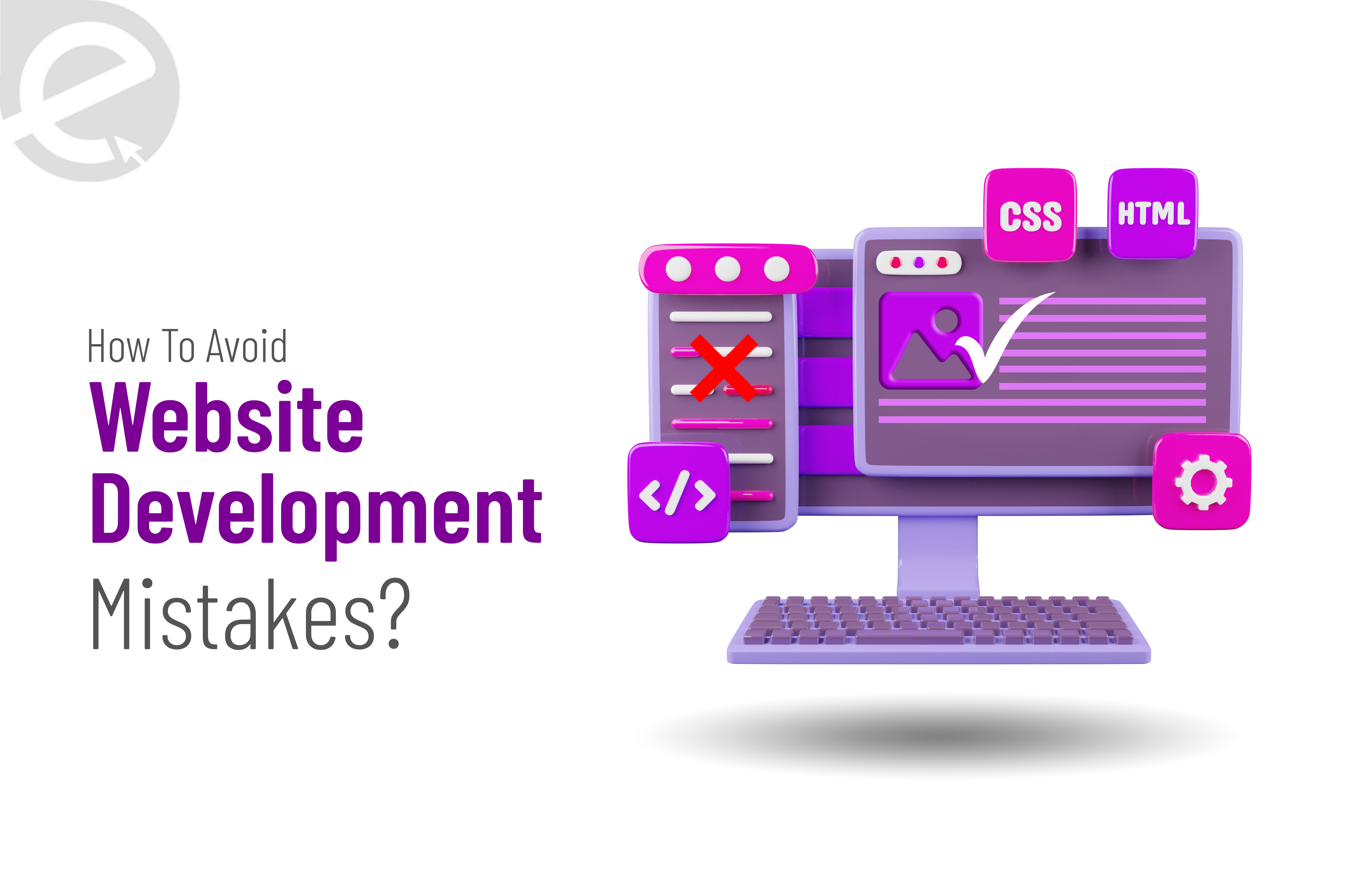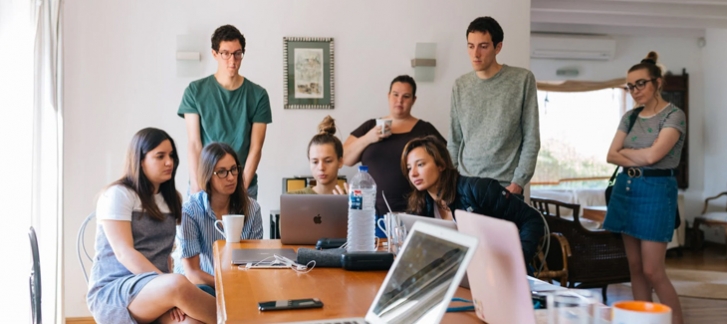
We Develop Websites Keeping Marketing in Mind
What is the Mood Board Creation Process To Create Inspiring Brand Designs?
 May. 05, 2023, 5:30 PM
May. 05, 2023, 5:30 PM- By Eclick Softwares and Solutions

A mood board is the concept board the designers use to collect references, generate ideas and draft user interface components for creating designs of digital products and services. UI/UX design mood board relies on the elements to shape the user experience and interface. So, a good design mood board comprises of –
- Colour Palette
- Fonts
- Style
- General Mood
- Reference Images
- Key States
Why Do the Designers Use Mood Boards to Create UX or UI Design?
Mood boards are approachable and easy-to-understand collages in UX designs that visually show what feelings or values digital products create, that is to say, the visual vibes. Mood boards establish the tone of voice for content while rendering visual cues about the product in question.
Typically, the designers use mood boards for defining the primary UI colours and the visual design identity of the products. At the same time, mood boards even contain the design aspects like –
- Interaction-design Patterns
- Persuasion or Marketing ideas
- Inspiration
- The tone of voice words
Later this collection proves useful for inspiring a visual style guide. Nevertheless, mood boards inspire the designing with –
- Generating ideas through the design inspiration collected in a single place
- Quick conveyance of the product’s tone
- Aligning interpretations as well as future design directions
The foremost advantage is that mood boards can be collaboratively created – multiple talents are welcome to contribute, whether synchronously or asynchronously.
How Do The Mood Boards Influence In Digital Product Development?
Belonging to the part of the design approach, the mood boards encourage the development team to –
a. Ideate –
As long as the product design and development is in the ideation stage, mood boards enkindle and nutrify creative and motivate idea formulations.
b. Keep the Product Owner/Client Involved –
By involving the product owner or client in the mood board construction, the key stakeholders are involved in the product’s aesthetics.
c. Conduct Testing With Users
The visual appeal of the product design is tested using a mood board with target audiences. The users can provide feedback about images and colours by emotionally responding.
d. Save Time
Mood boarding takes a few hours maximum to create a visual foundation for a prototype as well as other early product iterations. So, the mood boards can be done relatively quickly.
e. Maintain Flexibility
Maybe the circumstances have changed and the project has to pivot. Then returning to the mood board and editing in line with a new direction or to cater to the recent feedback is easier.
f. Create A Finer UX/UI
Mood boards are the focus attention of the key elements of user experience and user interface, speaking directly of user requirements. It is because the design’s visual elements are emphasized.
After a UI design mood board has been completed and approved, it turns into a robust visual reminder to the design and development team so they can stick to their aim. This is how a consistent aesthetic style is maintained – suitable to the client's goals and expectations.
The Mood Board Design Creation Process For Creating Inspirational Brand Designs
The first hold to create an effective mood board is having good knowledge about the brand elements to be included in the company's brand. The designers must extract all the information from the client about the best brand-representing elements. Then they combine all these elements to make a cohesive inviting and appealing image to nurture the target audiences.
Step 1 – Establishing Mood Statements
Defining the user–centred mood statements is the first step in mood board design. Mood statements are short sentences stating how should the users feel at the time of interacting with the brand product service and its features.
Step 2 – Setting On the Mood
After the designers have brought out the mood statements, next they set the mood by defining the emotional response. They highlight the emotion in each mood statement on the number of user personas, by coming up with 2 – 5 emotions. These emotions state what users are to feel when they look at the created mood board. The triggering emotions from the mood board align with mood statements.
Step 3 – Brainstorming the Theme
The designers form a few ideas after the client conveys his/her agenda. Then, they brainstorm the relevant keywords attached to these ideas, which are style, materials and colour features. These ideas further help them to search for images online image searches to resonate with their idea.
Step 4 – Tool Selection
Now the designers select the tools for creating a digital board. A digital mood board tool with the potential to collect and move the visuals around is needed. Digital whiteboarding tools like Micro, FigJam or Mural are the visual design, UI design and prototyping tools supporting the mood board design creating process.
Step 5 – Design Concept Definition
First, the designers define the design concept before going ahead with collecting images and inspiration. The design purpose, the target audience, and evoking emotions or feelings with the design are some of the concepts to bank on and search for images to come up with a cohesive mood board.
Step 6 – Collecting Inspiration
After defining the design concept, the designers collect inspiration. They look for colours, images, textures and typography to complement the mood and style to be conveyed. Some great resources to seek information from include Pinterest, Instagram and design blogs. When necessary, they create images or use the client's clicked photos for adding a personal touch to the mood board.
Step 7 – Determining the Style
The visual style is all about the design look and feel, and the used fonts, colours and images. While working on it, the designers define the style to be achieved to complement the design.
Step 8 – Searching for the Voice and Tone
A mood's personality is the voice. Herein, the designers brainstorm the adjectives defining how should the audiences perceive the brand's mood. From the list of mood-evoking adjectives, they choose 4 which are in the best alignment with emotions and style.
For the bright, bold and youthful style – the voice and tone should be loud, optimistic and outgoing.
Step 9 – Creating The Mood Board
With the set of inspiration being served, the designers get to create the mood board.
Visuals Arrangements
A good mood board should contain a visual hierarchy. The designers decide how important each asset is, and then prioritize the important ones which could establish the desired mood. The key sources are made larger and placed in the mood board's middle. As per the project demand, they group the resources of the same type for the people to quickly navigate the mood board. They skillfully utilize the white space to separate the collages in proper order.
Editing, Refining and Finalizing
After they have created the mood board, then they get to edit and refine it. The images not fitting the overall concept and style are removed. Experimentation with the layout and image arrangements goes on till the best combination has been discovered. The mood board has the goal to convey a cohesive design concept. So everything should seamlessly fit together.
Step 10 – Testing the Mood Board
The mood board design is finely tuned when the other faculty members have a good understanding of the visual storytelling involved. It could be the others might question a lot, meaning the designers have to start with reworking. When a mood board effectively conveys the idea, then everyone would understand in just one go.
Finally, the mood board is done! Indeed completing the creative project heaves a sigh of relief. But being dedicated designers, they can create multiple mood boards for exploring different visual directions. Inspiration is the root, and coming up with a persuasive inspiration calls for effort and time. The whole mood board design has to communicate intangible ideas while providing a quick and straightforward solution.
Related Blog
- By Eclick Softwares and Solutions
- February 7, 2025
Common Website Developmen ...
A smooth-working website is the result of strong codes, SEO, ...
Read More- By Eclick Softwares and Solutions
- January 20, 2025
How Useful Is Local SEO F ...
Properly implementing Local SEO strategies for a small busin ...
Read MoreSearch Blog...
Recent Posts
Eclick Services







